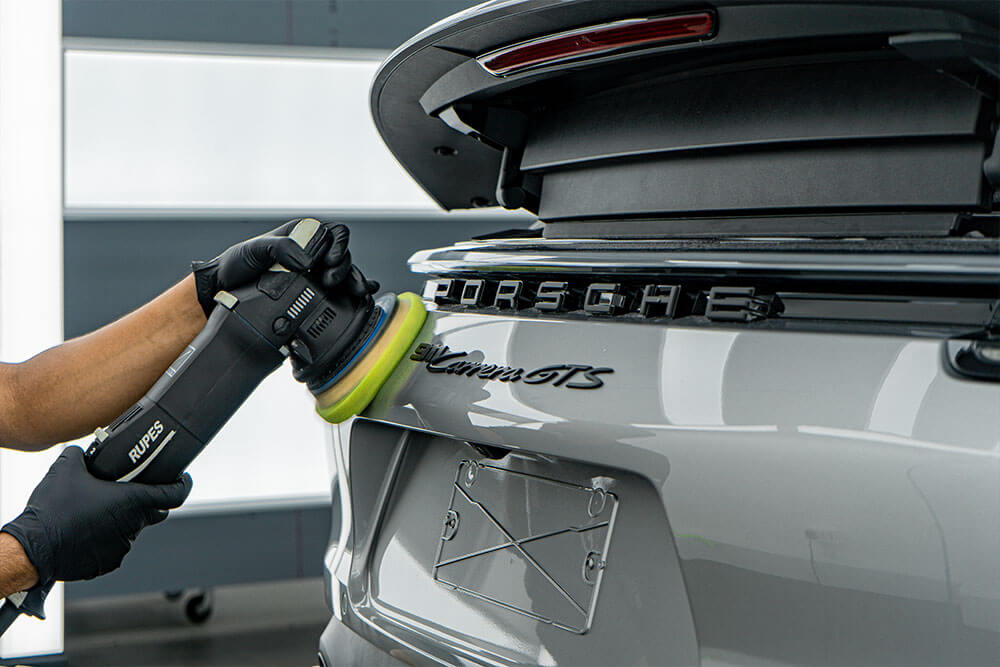
Okay, let’s have a real talk about something super important here in the UAE, especially with that intense sun beating down. You know that feeling when you open your car door and it’s like stepping into an oven? Yeah, we’ve all been there. There’s this massive myth floating around that a darker window tint automatically means a cooler car. And let me tell you, that myth is a costly one, a real wallet-drainer.
Seriously, it’s totally possible to pay good money for a 5% VLT (that’s “Visible Light Transmitted,” basically “limo tint”) that looks super cool and private, but then you find out it has a TSER (Total Solar Energy Rejected) of less than 40%. What does that mean? It means it’s still letting the majority of the sun’s nasty, heat-generating energy bake your interior! That, my friend, is the critical, often misunderstood difference between a film you pick just because of how it looks and one you choose for true, measurable performance. It’s night and day.
As window tinting technology gets more and more advanced in 2025 – with these really sophisticated ceramic and nano-carbon films taking over the market – just walking in and asking for “dark tint” is, frankly, an outdated approach. It’s like asking for “fast car” without checking the engine specs. The real performance, the stuff that actually keeps you cool, is hidden in those technical specifications. Understanding that alphabet soup of VLT, IRR (Infrared Rejection), and the all-important TSER is the only way to ensure your investment delivers the actual heat rejection you’re truly paying for. Don’t waste your money on just a dark look!
So, are you ready? It’s time to decode that spec sheet like a seasoned pro. Let’s break down what these numbers really mean, so you can make a smart, data-driven decision based on performance that you can feel, not just how much privacy you get.
VLT (Visible Light Transmitted): The “Looks” (And Why It Tricks People!)
VLT is probably the simplest and most straightforward metric you’ll see on any tint spec sheet. Basically, it just measures the percentage of visible light that’s allowed to pass through your tinted window. In short, VLT is the number that tells you exactly how dark the tint will look from the outside.
- How to Read It: It’s a bit of an inverse relationship, so pay attention: a lower VLT percentage means a darker tint, giving you more privacy. A higher VLT percentage means a lighter, more transparent film. Easy, right?
- 5% VLT: This is that super dark “limo tint” you see, offering maximum privacy. You can barely see in!
- 70% VLT: This is a very light, almost clear film, often used legally on windshields. It’s hardly noticeable.
- The Critical Misconception: This is the BIG one! Listen up, because this is the most important point to understand: VLT has almost no correlation whatsoever with how much heat is actually rejected. Seriously! You can have a very dark, low-quality dyed film with a 5% VLT that still allows a massive amount of invisible, heat-generating infrared light to pass right through, effectively turning your car into an oven anyway. VLT is solely a measure of aesthetics and privacy; it is not a measure of performance when it comes to keeping your car cool. Don’t get fooled by just the darkness!
IRR (Infrared Rejection): The “Feeling” (This Is Where Your Comfort Kicks In!)
Alright, now we’re moving from just looks to true, undeniable performance. Infrared (IR) light is that invisible part of the solar spectrum that our bodies perceive as heat. You know that feeling when you park your car in the sun, and the dashboard, steering wheel, and even the air feel incredibly hot, even if the AC is blasting? That’s infrared energy radiating through the glass. So, a film’s IRR rating is a direct measure of its ability to block this actual, physical heat.
- How to Read It: IRR measures the percentage of infrared radiation that the film rejects. Unlike VLT, a higher IRR percentage is always, always better. A film with a 90% IRR means it’s blocking 90% of that radiating heat you can physically feel from the sun. That’s a huge difference!
- Why It Matters in the UAE: This is a Game-Changer Here! For cabin comfort in our sizzling hot climate, this is a critical performance metric. A high IRR is what truly prevents your dashboard, steering wheel, and seats from becoming scorching hot to the touch after being parked in the sun for just a few minutes. It’s also the key factor that allows your car’s air conditioning system to cool the cabin down much, much faster and work more efficiently. Why? Because it has to fight against significantly less incoming heat. This is a crucial component of any genuinely high-performance window tinting film. You’ll feel the difference immediately.
TSER (Total Solar Energy Rejected): The “True Performance” (The King of All Numbers!)
Okay, this is it. This is the single most important number on any window tinting spec sheet. Period. It’s the metric that truly separates a high-performance film from a simple colored one. TSER stands for Total Solar Energy Rejected, and it is the ultimate, definitive measure of a film’s ability to reject heat from all three sources of the sun’s energy:
- Visible Light: Believe it or not, this accounts for approximately 44% of solar heat.
- Infrared Light: This is the big one, making up approximately 53% of solar heat.
- Ultraviolet (UV) Light: About 3% of solar heat, but super damaging!
- How to Read It: Just like IRR, a higher TSER percentage is always, always better. This number gives you the complete, honest picture of how much total solar heat the film is actually blocking from entering your car. It’s the whole story in one number.
- The Pro’s Metric: This is What We Look At. This is the number that true professionals and super informed consumers (like you will be!) focus on. While a high IRR is a fantastic feature, a film can actually have a very high IRR but still have a low TSER if it does a poor job of blocking the heat that comes from visible light. TSER is the number that tells the complete story, combining all factors into one, definitive performance grade. When you are comparing two films, the one with the higher TSER will always keep your car cooler. Always.
The Unseen Protector: UV Rejection (Saving Your Car and Your Skin!)
Finally, we come to the unsung hero, the unseen protector in any quality window tinting film: its incredible ability to block Ultraviolet (UV) light. This is that invisible radiation from the sun that’s notorious for causing your car’s interior plastics to fade (you’ve seen those ugly faded dashboards, right?), your leather to crack, and, crucially, it’s also incredibly harmful to your skin.
- The Industry Standard: A Non-Negotiable Must-Have. Unlike VLT or TSER, UV Rejection isn’t really a variable performance metric you need to compare. Instead, it’s more of a standard feature that you simply must confirm is present. Virtually all quality window tinting films on the market today, regardless of their other specs, are specifically engineered to block over 99% of harmful UV rays. So make sure that’s stated!
- Why It’s Crucial (Beyond Heat!): This is a huge benefit that goes way beyond just heat rejection. By eliminating almost all UV radiation, a quality film acts as a powerful, invisible shield for your car’s interior, preserving the color and integrity of your dashboard, seats, and trim for years and years to come. And guess what? It’s also actively protecting you and your passengers from its harmful effects, like premature skin aging and even skin cancer risk. That’s peace of mind right there.
Choose Performance, Not Just Privacy (Be Smart About Your Tint!)
Okay, so here’s the expert strategy for choosing the right window tinting film, simplified into a two-step process. First, decide on the level of darkness and privacy you desire – that’s your VLT percentage. Easy. Then, and this is the most important part, within that VLT category, you must choose the film with the absolute highest TSER number. That’s your golden rule.
It’s time, once and for all, to abandon the old myth that darker automatically means cooler. It just doesn’t! The true, measurable performance of a window film—its genuine ability to keep your car’s cabin comfortable and protect you from the sun’s relentless heat—is told by its TSER rating. A high TSER is the definitive mark of a high-quality, high-performance film. Don’t let anyone tell you otherwise.
So, next time you get a quote for window tinting, please don’t just look at the price, and don’t just pick based on how dark it looks. Ask to see the full technical spec sheet! By understanding the real difference between VLT, IRR, and especially the all-important TSER, you can make an informed, data-driven decision and ensure you’re investing in real, measurable performance that you’ll feel every single day, not just a darker look. You’ll be glad you did, I promise!


